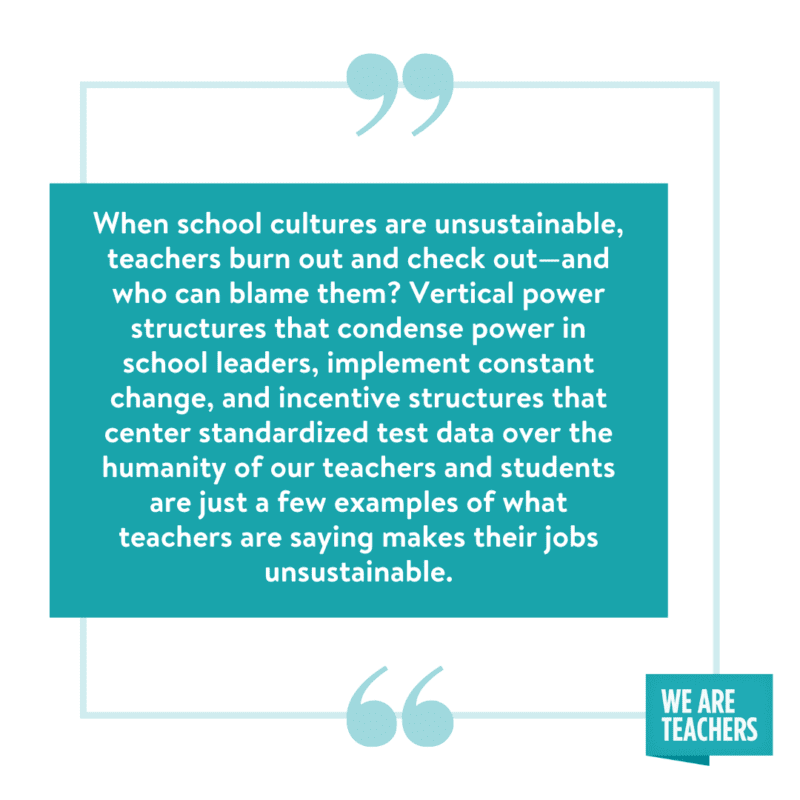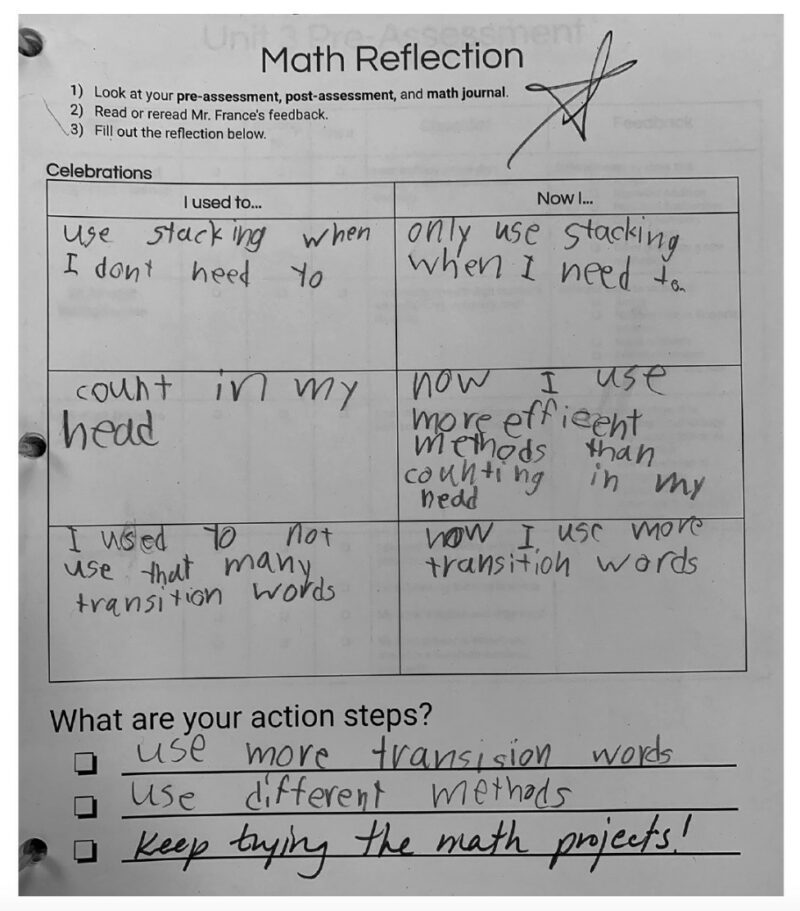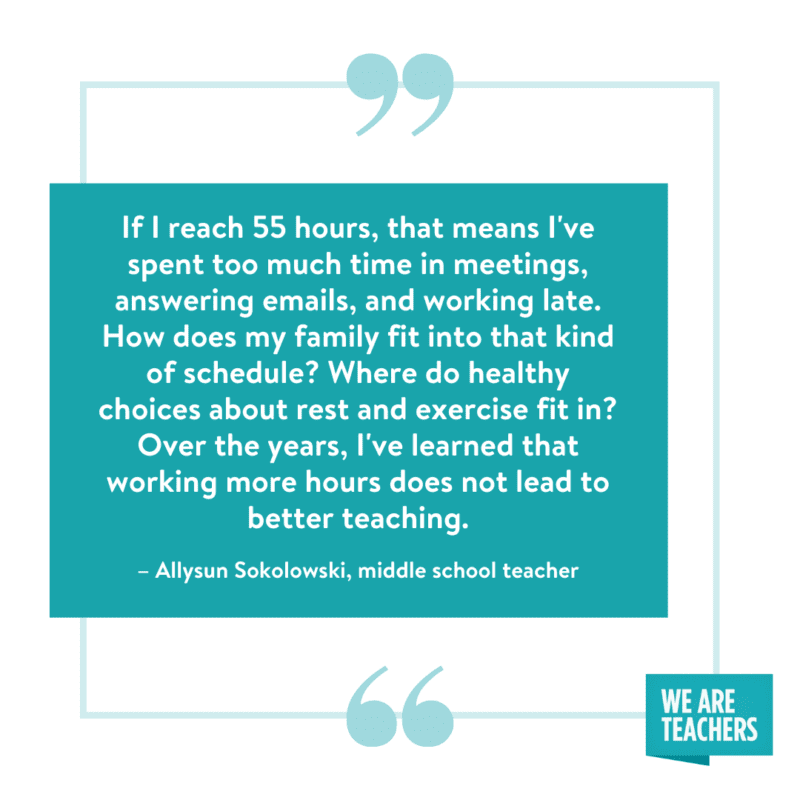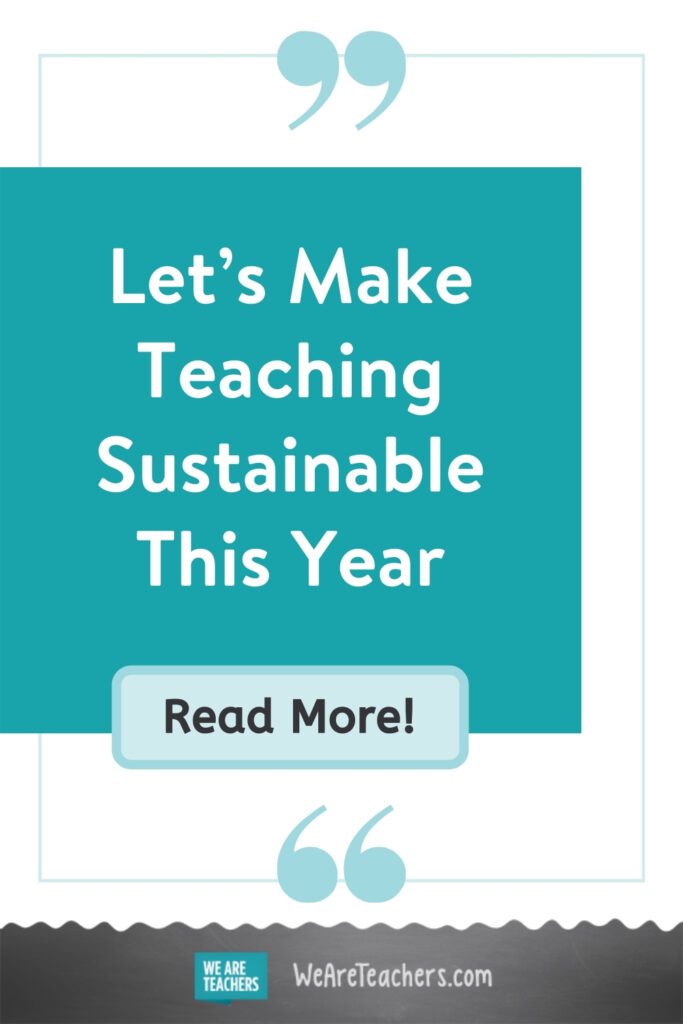Whether you are a teacher, a school librarian, a principal, or a superintendent, one thing is clear. We can’t go “back to normal” in fall 2021. That’s because the old normal of schooling was dehumanizing, unsustainable, and bad for kids. In far too many schools, educators were trapped in cultures of compliance. Teachers, in particular, were beaten up and blamed by parents, the media, and toxic leadership.
If we don’t use this moment to make significant changes, students may arrive in classrooms without a teacher. That’s right, the stakes are high: Schools and school districts are experiencing teacher shortages across the country. In one survey published by Frontline Education, as many as 2 of 3 respondents reported having teacher shortages. For some teachers, the previous pandemic year was the last straw.
Sustainability must be central in the vision for the “new normal” of teaching and learning. We must decide what to keep, what to change, and most importantly, what to let go of as we work towards sustainability in our schools.
What does sustainable teaching look like?
So, what do I mean by sustainable teaching? I’ve been collecting responses from teachers and school leaders across the country and interviewing them to enhance my understanding of what needs to change.
The research has confirmed for me that every person is different. And so, inevitably, there is not going to be a one-size-fits-all definition of what makes a job “sustainable.” That said, common themes have arisen. Respondents have consistently used words like “autonomy.” Many made the reasonable request that their administrators and families trust them—trust that they can, in fact, make decisions for their students within classrooms. Others have mentioned the need to take a systems-thinking approach to problem-solving in schools, with both teachers and administrators alike reflecting on the importance of systemic change.
Unsurprisingly, many acknowledged that systemic change isn’t always within our immediate control. In interviews and surveys, standardized testing is one of the most formidable impediments to change. Educators reiterated just how far-reaching and influential standardized tests can be, disrupting and industrializing teaching and learning. So, it seems educators begin the journey by defining what sustainable teaching is not. Fair enough.
Three layers of sustainability
Not all factors lie outside of our control. There are ways to work within the system, making small changes to make our jobs more sustainable. In fact, all individuals—teachers, paraprofessionals, and administrators alike—play a role in working towards a sustainable school. I define it in terms of three layers: cultural sustainability, pedagogical sustainability, and resource sustainability.
Cultural sustainability refers to the conditions in which teaching and learning can live, thrive, and be sustained by the individuals within schools.
When school cultures are unsustainable, teachers burn out and check out—and who can blame them? Vertical power structures that condense power in school leaders, implement constant change, and incentive structures that center standardized test data over the humanity of our teachers and students are just a few examples of what teachers are saying makes their jobs unsustainable. These cultural components of far too many schools chip away at the intrinsic motivation of teachers, creating a compounding cycle of unsustainability.

Daniel Pink, the author of Drive: The Surprising Truth About What Motivates Us (2009), describes three inputs to intrinsic motivation: autonomy, mastery, and purpose. When individuals experience autonomy, they are able to make decisions on their own, albeit within constraints; when they experience mastery, they bear witness to their own growth. And when schools are built with purpose in mind, teachers understand the why behind even the most undesirable parts of our jobs.
In sustainable school cultures, teachers experience all three of these conditions. They feel a sense of purpose within the school, understanding how their role and their actions contribute to the collective vision of the school; they are able to experience a sense of mastery through job-embedded professional learning, witnessing their growth as an educator through productive relationships with colleagues, coaches, and administrators; and most of all, they experience autonomy in their pedagogical decision-making, cultivating curiosity and innovation in their practice. Achieving cultural sustainability requires sharing power. Administrators can share power through collective decision-making, leveraging consensus-building when possible. While building consensus can take longer—and while it can be quite messy—it creates sustainability through its inherent inclusivity. Teachers can share power, too. They can build classroom agreements with students, leverage pedagogies that incorporate student interest, and otherwise teach in a way that offers students structured voice and choice.
Perhaps the most important input to cultural sustainability is inclusion. Our schools must be places where we can all show up as our authentic selves; they must be places where all voices are heard and valued. Django Paris, author of “Culturally Sustaining Pedagogy: A Needed Change in Stance, Terminology, and Practice” (2012), states that “culturally sustaining pedagogy seeks to perpetuate and foster—to sustain—linguistic, literate, and cultural pluralism as a part of the democratic project of schooling.” This idea of pluralism feels especially important when creating schools that are culturally sustainable: schools can be culturally sustainable when all who enter the school can feel a sense of belonging and experience self-actualization of their identities. This entails dismantling white supremacist structures and thinking in our schools, so that individuals of color, LGBTQ+ individuals, and other marginalized individuals can find belonging within the collective consciousness of the school. This culture work is so important because it will inevitably influence and guide what it looks like to teach sustainably on a day-to-day basis.
Pedagogical sustainability refers to the cumulative impact of decision-making about curriculum, assessment, and instructional techniques.
When pedagogies are unsustainable, they are steeped in compliance. What’s more, they fortify a system of standardized assessments. This ultimately creating busy work for both teachers and students and detracting from deep learning. When pedagogies are sustainable, however, teachers can plan, prepare, and instruct within the confines of a normal school day, spending less time on compliance tasks and more time on creating rich learning experiences.
Above all else, it’s important that we preserve high-quality teaching in this quest for sustainability. Our teaching won’t be sustainable if it results in experiences that lack richness and rigor. But the beauty of it is, many sustainable practices I’ve uncovered in interviews so far are actually best for kids. These pedagogies share power with students in order to empower them, not only helping our students become independent learners (Hammond, 2015), but also allowing students to share the responsibility of learning in our classrooms, making our jobs more sustainable.
“Whoever is doing the most work in the classroom is doing the learning,” says Maribel (Mari) Gonzalez, STEM Integration Transformation Coach. This long-held tenet is powerful when it comes to sustainable teaching. We know from neuroscience and virtually every field that learners must engage meaningfully with new concepts to meaningfully learn them.

While it’s important that we don’t put the entire responsibility for sustainability on teachers’ shoulders, it is also important for teachers to leverage what is within their loci of control to make learning more sustainable on a day-to-day basis. Considering who is “doing the most work,” as Mari says, can be a helpful tip in shifting pedagogy towards sustainability.
We can apply this principle of learner engagement to other parts of teaching, especially assessment. Too often, the burden of assessment lies on the teacher, when assessment should be a partnership between teacher and student, one to which students can contribute through self-reflection and self-assessment, much like the student reflection you see pictured below. When we invite our students into the process of assessment, we not only empower them with greater self-awareness, we share a responsibility with them and create a more sustainable workload.

A student reflection from Reclaiming Personalized Learning by Paul Frances
Anyone who has worked in schools is familiar with the constraints created by a scarcity of resources.
As we know all too well, it’s not uncommon for teachers to purchase their own materials. This includes basics such as pencils, glue, and notebooks. Likewise, we know that time, space, and money is scarce. Teachers are always asking for more time—more time for planning, preparation, and meaningful assessment, among other things. My survey data and interviews suggest this, too. Teachers overwhelmingly are looking for more time to plan for and reflect on teaching so that they are not using their weekends. Allysun Sokolowski, a middle school teacher in Bethesda, Maryland, shared with me that she puts a 55-hour limit on their teaching responsibilities, quite literally tracking her own hours to work towards sustainability.
“It provides me with immediate feedback,” she said. “I know that if I hit 55 hours per week, I have to stop. Tracking my hours inevitably leads me to ask myself where I am spending my time. If I reach 55 hours, that means I’ve spent too much time in meetings, answering emails, and working late. How does my family fit into that kind of schedule? Where do healthy choices about rest and exercise fit in? Over the years, I’ve learned that working more hours does not lead to better teaching.”

Allysun went on to say that this might mean not getting to lessons she had planned for the week.
That’s quite a controversial statement in a profession that values urgency, perfectionism, and selflessness above all else. But we must remember this: our own humanity is quite possibly our most powerful resource. And we must do more to protect ourselves and our time.
It’s important to note that protecting our personal boundaries isn’t always within our locus of control. Teachers face pressure from parents and administrators to work at all hours during the school year. For some, severe consequences can result from a lack of preparation or prioritizing self-care. But that doesn’t mean it’s right. And it certainly doesn’t mean we shouldn’t be talking about ways to preserve teachers’ humanity in the classroom.
“If I burn myself out,” she continued. “Then what’s the point of this whole thing?”
Sustainability is personal
It’s true that our core purpose is to serve students and families. That is “the point,” for lack of a better term. We also should remember that it is not the only point, though. We become teachers because we derive something intrinsically fulfilling from it. At the very least, we deserve sustainability and respect, just as much as our students deserve a high-quality education.
While these common threads unite, the reality is that sustainability looks different for each of us. It is true that all schools should strive for cultural, pedagogical, and resource sustainability. Amplifying teachers’ voices and telling their stories can be a vehicle for reaching these goals.
I want to amplify your voice, too, and so if you’d be willing to share your story, please take the #SustainableTeaching survey to let me know what sustainability looks like to you as we create a new normal for our schools.
This is a serious matter, and we should be treating it as such. We cannot afford to go back to the status quo; we cannot trudge forward into a “new normal” that is just as unsustainable as our last version of normal. Teachers need sustainability in our jobs—and we need it now.
Want more articles like this? Make sure to subscribe to our newsletters!


